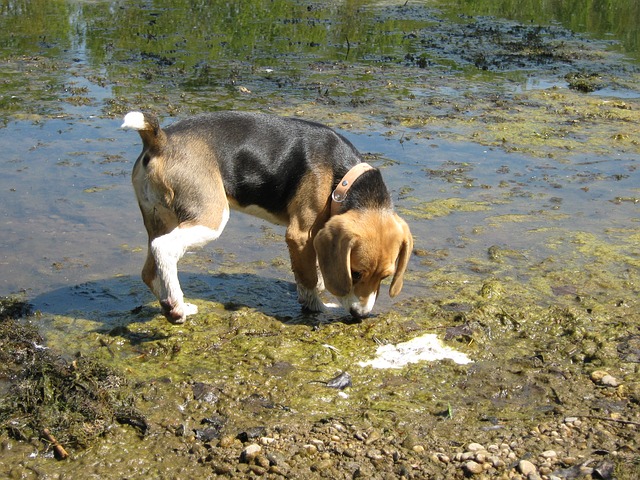
Crystalluria is the presence of crystalized, concentrated minerals naturally found in your dogs’ urine. There are different types of crystals, and they can lead to different types of bladder stones or kidney stones.
Identification of the type of crystal in your dog’s urine is important as it can indicate an underlying disease, but even healthy dogs can have crystals in his urine. Some breeds are more susceptible to certain crystals: Miniature Schnauzers, Yorkshire Terriers, Lhasa Apsos and Miniature Poodles to calcium oxalate; Dachshunds, English Bulldogs and Newfoundlands to cysteine; Dalmations and English Bulldogs to ammonium urate or uric acid; Miniature Schnauzers, Shih Tzus, Bichon Frises, Miniature Poodles, Cocker Spaniels and Lhasa Apsos to struvite crystals.
Symptoms of Crystals in the Urine in Dogs
In many cases, your pet will not exhibit any symptoms of crystals in the urine. However, you may see the following symptoms of bladder stones, if crystals have advanced into stones:
- Frequent urination
- Trouble urinating
- Irregular urine stream
- Increased thirst
Types
Different types of crystals can form from different mineral concentrations. Types of urine crystals include:
- Magnesium ammonium phosphate (struvite)
- Calcium oxalate
- Ammonium urate, or uric acide
- Cysteine
- Calcium
- Phosphate
- Silica
Causes of Crystals in the Urine in Dogs
Crystals in dog’s urine may be caused by one of the following:
- A diet of highly processed dog food, and/or foods high in grains and other fillers.
- Timing of sample collection; for instance, a sample taken after a meal may have higher concentrations than a sample taken during fasting.
- Imbalanced urine pH.
- Abnormal concentrations of certain minerals in urine, which can be caused by changes in rate of excretion and urine concentration.
- Lack of solubility of crystallogenic substances in the urine, or the inability of the minerals that form crystals to dissolve in urine causes them to form.
- Excretion of diagnostic agents and medications that can affect mineral concentrations in urine.
Diagnosis of Crystals in the Urine in Dogs
A urinalysis can determine whether crystals are present in your dog’s urine. Samples will be viewed under a microscope and tested for pH and mineral content to confirm they type of crystals in the urine. If your vet thinks your dog may have kidney or bladder stones, an x-ray or ultrasound may be performed to detect them.
Treatment of Crystals in the Urine in Dogs
Crystals may not need treatment, and may just be a normal part of your dog’s metabolism. They can form blockages or stones, though. Some cases might require adjusting the pH of your dog’s urine through a prescription diet. Increasing your dog’s water intake will be recommended to increase his urine volume. Some prescription diets may contain added sodium to get him to drink more water on his own.
Recovery of Crystals in the Urine in Dogs
Follow all your vet’s instructions for your dog’s diet. Monitor your pet for signs that he might have developed stones (see the symptoms above.) A follow up will be recommended to monitor the presence and levels of crystals in the urine. If pH management was prescribed, you can obtain strips to test the pH level of his urine at home to see whether the diet is working. Most importantly, make sure your dog always has access to clean water. Consider urinary supplements for maintaining your dog’s bladder health.
 Toledo, United States.
Toledo, United States.